M A R C H 2 0 1 8
A
National
Machine
Intelligence
Strategy
for the
United
States
AU T H O RS
William A. Carter
Emma Kinnucan
Josh Elliot
CO N T R I B U TO RS
William Crumpler
Kirsten Lloyd
A R E P O RT O F T H E
CS I S T E C H N O LO G Y
P O L I CY P R O G R A M
�
�
M A R C H 2 0 1 8
A National Machine
Intelligence Strategy
for the United States
AUTHORS
William A. Carter
Emma Kinnucan
Josh Elliot
CONTRIBUTORS
William Crumpler
Kirsten Lloyd
A Report of the
CSIS TECHNOLOGY POLICY PROGRAM
�
About CSIS
For over 50 years, the Center for Strategic and International Studies (CSIS) has
worked to develop solutions to the world’s greatest policy challenges. Today, CSIS
scholars are providing strategic insights and bipartisan policy solutions to help de-
cisionmakers chart a course toward a better world.
CSIS is a nonprofit organization headquartered in Washington, D.C. The Center’s 220
full-time staff and large network of affiliated scholars conduct research and analysis
and develop policy initiatives that look into the future and anticipate change.
Founded at the height of the Cold War by David M. Abshire and Admiral Arleigh
Burke, CSIS was dedicated to finding ways to sustain American prominence and
prosperity as a force for good in the world. Since 1962, CSIS has become one of
the world’s preeminent international institutions focused on defense and security;
regional stability; and transnational challenges ranging from energy and climate
to global health and economic integration.
Thomas J. Pritzker was named chairman of the CSIS Board of Trustees in Novem-
ber 2015. Former U.S. deputy secretary of defense John J. Hamre has served as the
Center’s president and chief executive officer since 2000.
CSIS does not take specific policy positions; accordingly, all views expressed here-
in should be understood to be solely those of the author(s).
Acknowledgments
This report is coauthored and made possible by the generous support of Booz Al-
len Hamilton Inc. Booz Allen is a global firm of 24,225 exceptional people driven to
excel, do right, and realize positive change on behalf of their clients. For more than
100 years, Booz Allen has brought bold thinking to clients spanning defense to
health and international development. The firm’s core capabilities are in consult-
ing, analytics, digital solutions, engineering, and cyber. Booz Allen is also a leading
developer and implementer of machine intelligence (MI) technologies.
© 2018 by the Center for Strategic and International Studies. All rights reserved.
Center for Strategic & International Studies
1616 Rhode Island Avenue, NW
Washington, DC 20036
202-887-0200 | www.csis.org
II
A National Machine Intelligence Strategy for the United States�
Contents
IV Executive Summary
III
VI SECTION I
Introduction
4 SECTION II
The State of Machine Intelligence
10 SECTION III
Impact on the Economy, Society, and National Security
18 STRATEGIES
Creating a National Machine Intelligence Strategy
20 A. INVEST IN THE CONTINUING RESEARCH AND DEVELOPMENT OF MI TECHNOLOGY.
24 B. DEVELOP A WORKFORCE FOR THE MI AGE.
30 C. CREATE A FLEXIBLE AND OPEN DATA ECOSYSTEM IN WHICH MI CAN THRIVE.
34 D. CREATE THOUGHTFUL PUBLIC POLICY TO SPUR MI ADOPTION AND REDUCE BARRIERS.
38 E. DEVELOP PROACTIVE STRATEGIES TO MANAGE MI’S RISKS.
42 F. LEAD IN THE DEVELOPMENT OF MI TECHNOLOGY AND MI GOVERNANCE AROUND
THE WORLD THROUGH STRATEGIC MI PARTNERSHIPS.
46 Conclusion
�
Executive
Summary
The United States is at the precipice of a defining moment in history.
Over the past five years, progress in machine intelligence (MI) has great-
ly accelerated. From the defeat of Go champion Lee Sedol by Deep-
Mind’s AlphaGo program to the first deployments of fully autonomous
vehicles on public roads, recent events are challenging us to reevaluate
what may soon be possible for computerized systems. MI systems have
already begun to quietly pervade a growing share of businesses, gov-
ernments, and individual lives around the world, and we are only just
beginning to grasp the impacts that this technological revolution will
have on our economy, our society, and our national security.
The United States’ current economic and technical lead in MI uniquely
positions us to ensure the technology’s impact will be broadly beneficial,
for Americans and the world. Other countries have already established
national strategies to capture the benefits of MI and catch up with the
United States. Capturing this opportunity requires we invest in remain-
ing at the leading edge of MI’s development, and plan for the broader
changes it implies. A national strategy for MI will provide the United
States a platform for creating the policies and investments that ensure
MI’s progress is consistent with American goals, norms, and values.
This strategy should have two overarching goals. The first is to promote
the safe and responsible development of MI technology by funding
long-term R&D where the private sector is not incentivized to invest, de-
veloping a workforce for the MI age, creating dynamic commercial mar-
kets for MI technologies to capture the innovation of the private sector,
and proactively managing the risks and disruptions that MI will bring.
The second goal is to maintain U.S. leadership in MI by reinforcing our
innovation base and establishing strategic partnerships to leverage the
comparative advantages of our allies and lead the development of glob-
al MI governance.
IV
A National Machine Intelligence Strategy for the United States�
A. INVEST IN THE CONTINUING RESEARCH
AND DEVELOPMENT OF MI TECHNOLOGY.
Though the United States benefits from strong private-
sector investment in MI R&D, companies alone cannot carry
the burden of keeping the United States at the forefront of
MI innovation. The government has a unique role to play
in funding research into defense-specific innovations, sys-
tems of MI ethics and control, and high-risk, high-reward
long-term research with uncertain commercial returns. The
federal government must not waver in its commitment to
advancing these essential domains, and must ensure that
our national security community is able to keep up in the
development and deployment of MI-enabled systems.
E. DEVELOP PROACTIVE STRATEGIES
TO MANAGE MI’S RISKS.
While the apocalyptic warnings voiced by some in the
tech community are overblown, MI systems will raise
new challenges in the areas of privacy, algorithmic bias,
system safety and control. The U.S. government can help
confront these risks by leading in the development of
safety, ethics, and control standards for MI, and working
with the private sector to develop methods of testing and
certification for MI systems. In addition, policymakers
must establish clear expectations for MI developers in the
event of accidents in order to reduce regulatory uncer-
tainty and manage public anxiety.
V
B. DEVELOP A WORKFORCE FOR THE MI AGE.
We must adapt to shifting economic circumstances to
prepare our workforce for the jobs of the future. This will
require a renewed emphasis on computer science educa-
tion and technical skills to build and maintain MI systems,
as well as basic digital literacy and the liberal arts as the
economy faces a growing demand for adaptable workers
with soft skills capable of complementing the operations of
MI systems. It will also be essential for policymakers to help
workers displaced by automation to develop new skills by
expanding retraining and continuing education initiatives
and strengthening the social safety net. We must also en-
sure that our country is able to attract and retain the
best talent from around the world.
C. CREATE A FLEXIBLE AND OPEN DATA
ECOSYSTEM IN WHICH MI CAN THRIVE.
An essential component for the development of MI systems
is access to large amounts of high-quality training data. By
expanding government open data initiatives, working with
the private sector to support private-private sharing in ways
that protect privacy, and supporting the development and
deployment of new standards to improve data quality, the
government can help MI developers access the data they
need to create new and more powerful MI applications.
D. CREATE THOUGHTFUL PUBLIC POLICY TO
SPUR MI ADOPTION AND REDUCE BARRIERS.
Many U.S. enterprises are held back from capturing the full
benefits of MI due to uncertainty over legal and regulatory
requirements and a lack of supporting IT infrastructure. To
help grow the market for U.S. MI developers and improve
productivity throughout the economy, policymakers
should consult with industry partners to identify ways to
remove legal and regulatory uncertainty, and devise ways
of supporting IT modernization within the private sector.
F. LEAD THE DEVELOPMENT OF MI
TECHNOLOGY AND MI GOVERNANCE
AROUND THE WORLD THROUGH
STRATEGIC MI PARTNERSHIPS.
By developing strategic MI partnerships, the United States
can leverage the comparative advantages of our allies and
help shape global technical and governance standards
around the development and use of MI. A United States
with a clear national strategy for MI should play a central
role in the development of MI technology and MI policy
around the world, and that will require strong partnerships
with our allies.
IT will take time to craft and implement all of
the elements of a national MI policy, but
we must act now to establish a cohesive national
MI strategy. As a first step, the president should
designate an MI lead at the White House to coordi-
nate the development and implementation of a
strategy and ensure that this is a priority across
the federal government. This person should prior-
itize reviewing and implementing the 2016 AI R&D
Strategy recommended by the National Science
and Technology Council. Federal agencies and
regulators should also initiate consultations with
the private sector and MI experts in academia to
ensure that our approach is flexible enough to
adapt over time and appropriate to the technolo-
gy. These discussions will take time, but will help
to guide the efforts of policymakers and ensure
that MI governance develops in partnership with
industry, not in opposition to it.
�
SECTION I
Engingeer
working on
machine in
factory.
VI
INTRODUCTION
�
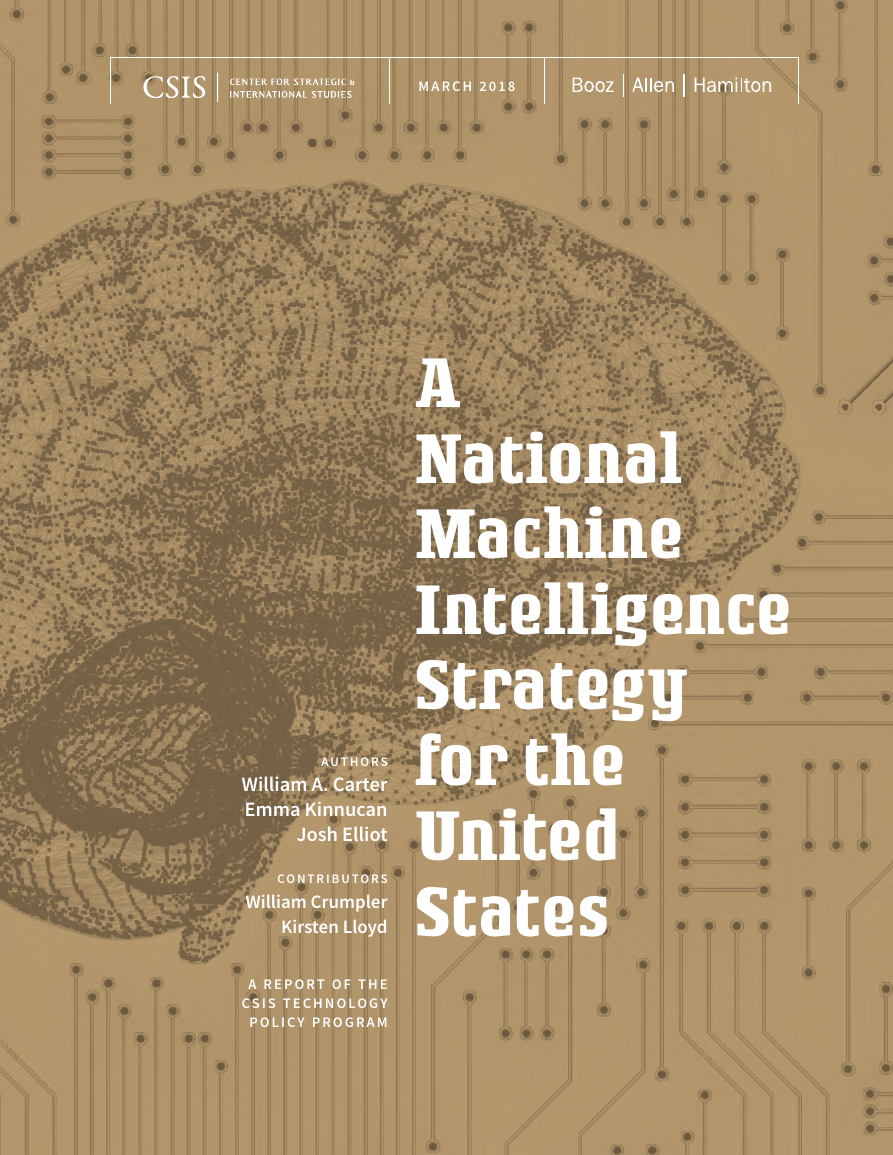

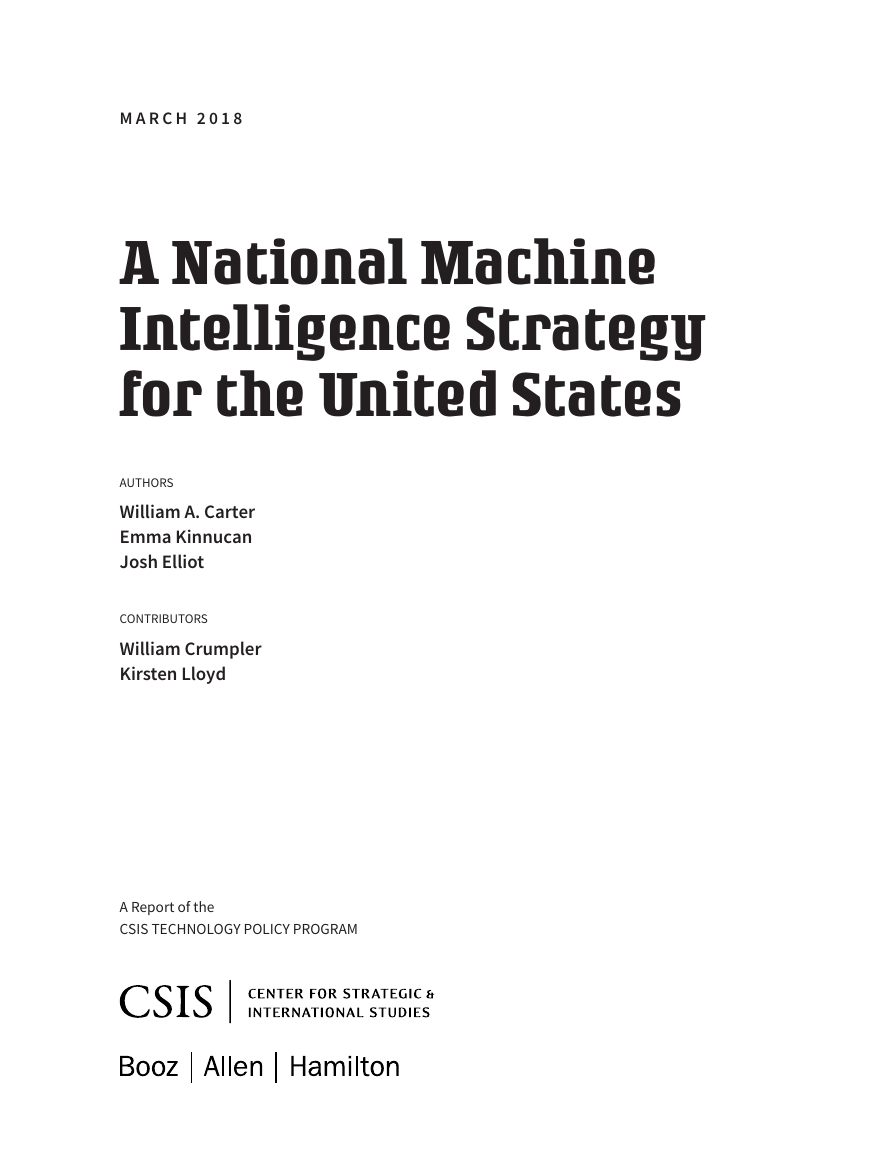
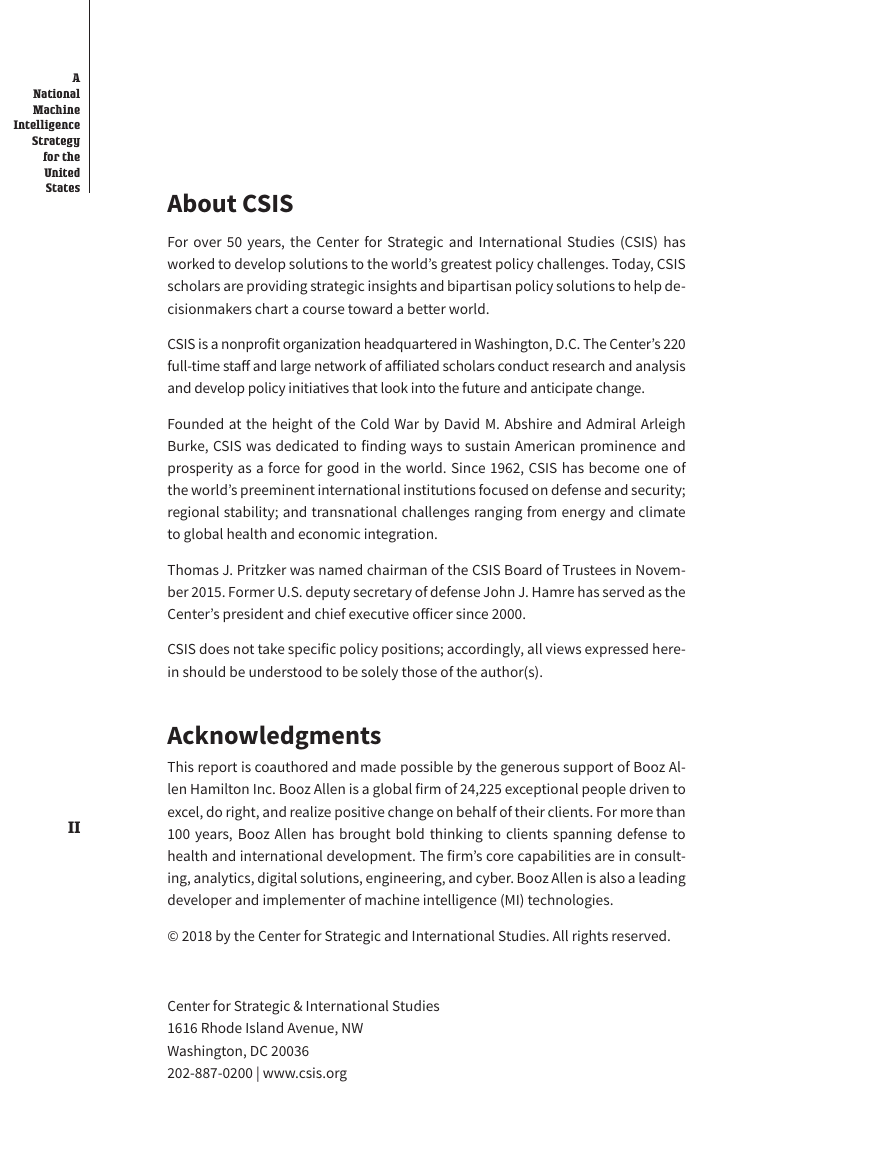
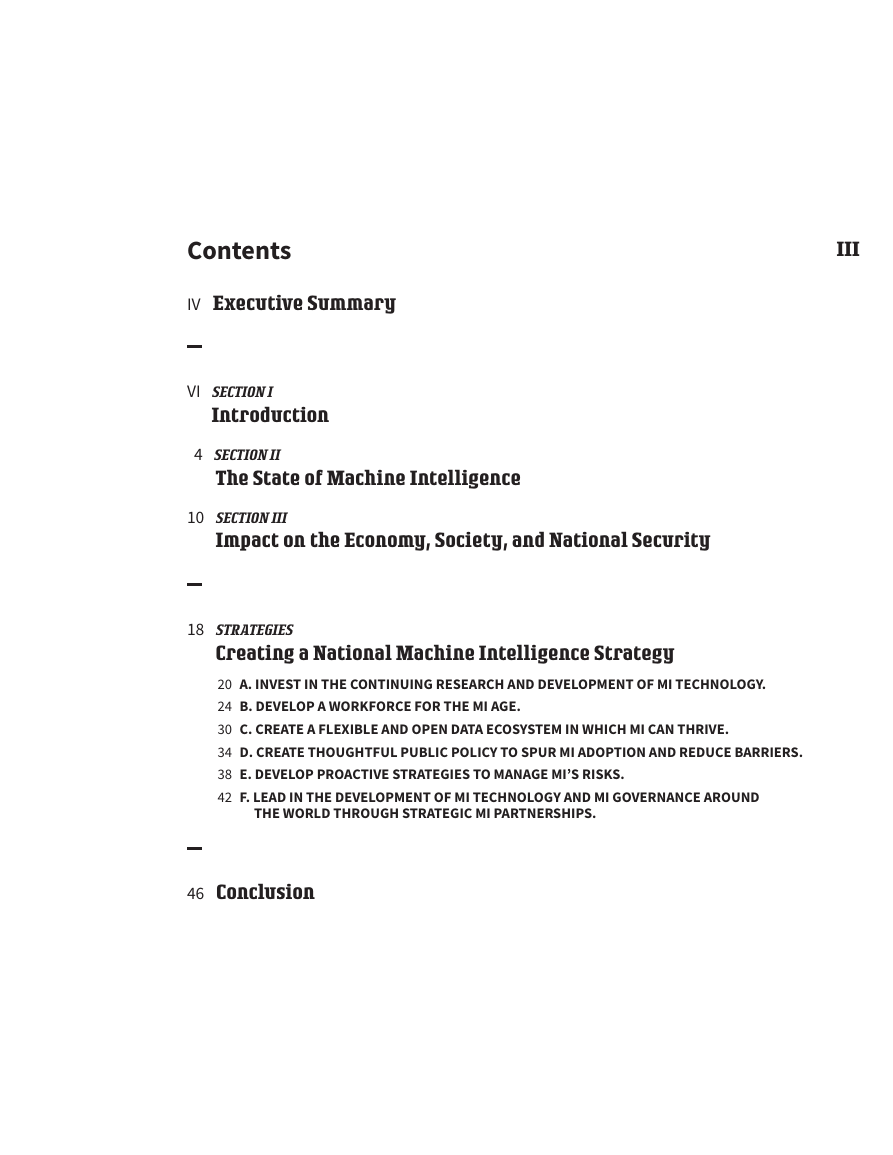

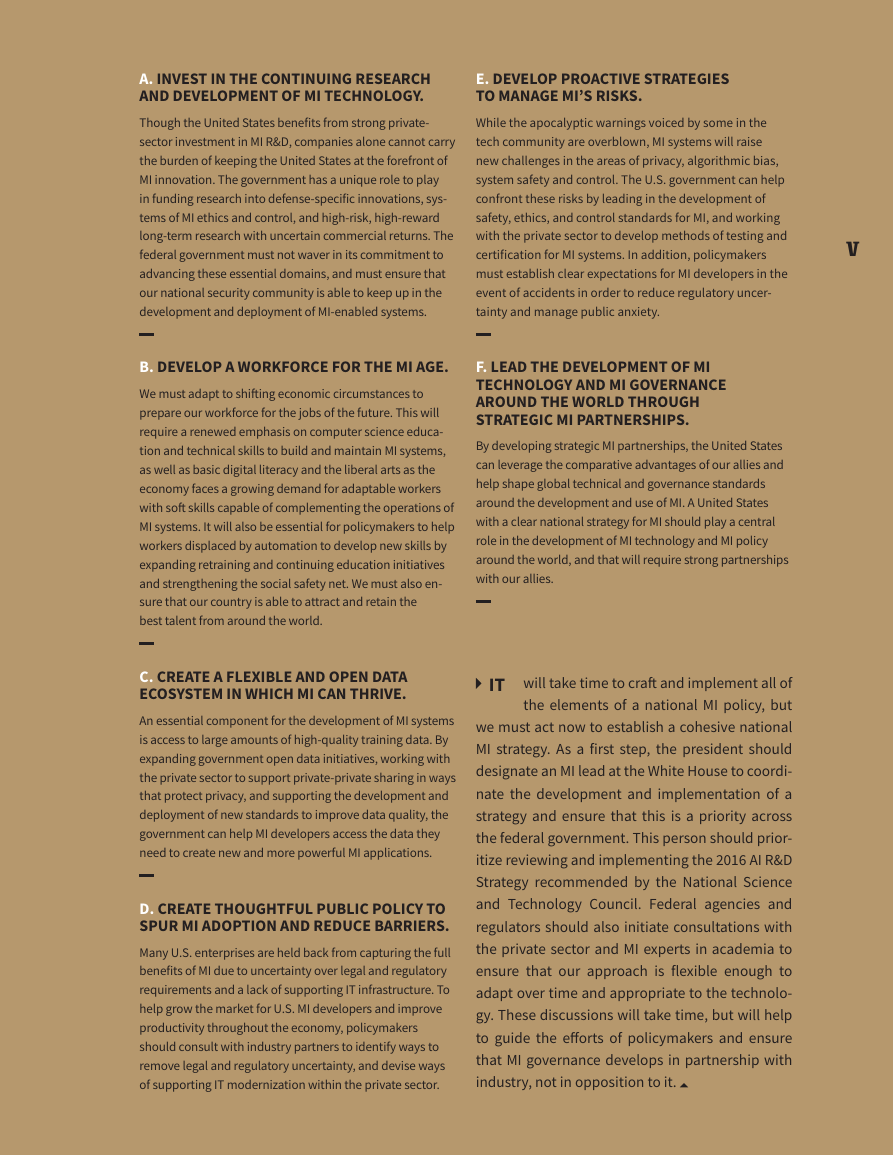









 2023年江西萍乡中考道德与法治真题及答案.doc
2023年江西萍乡中考道德与法治真题及答案.doc 2012年重庆南川中考生物真题及答案.doc
2012年重庆南川中考生物真题及答案.doc 2013年江西师范大学地理学综合及文艺理论基础考研真题.doc
2013年江西师范大学地理学综合及文艺理论基础考研真题.doc 2020年四川甘孜小升初语文真题及答案I卷.doc
2020年四川甘孜小升初语文真题及答案I卷.doc 2020年注册岩土工程师专业基础考试真题及答案.doc
2020年注册岩土工程师专业基础考试真题及答案.doc 2023-2024学年福建省厦门市九年级上学期数学月考试题及答案.doc
2023-2024学年福建省厦门市九年级上学期数学月考试题及答案.doc 2021-2022学年辽宁省沈阳市大东区九年级上学期语文期末试题及答案.doc
2021-2022学年辽宁省沈阳市大东区九年级上学期语文期末试题及答案.doc 2022-2023学年北京东城区初三第一学期物理期末试卷及答案.doc
2022-2023学年北京东城区初三第一学期物理期末试卷及答案.doc 2018上半年江西教师资格初中地理学科知识与教学能力真题及答案.doc
2018上半年江西教师资格初中地理学科知识与教学能力真题及答案.doc 2012年河北国家公务员申论考试真题及答案-省级.doc
2012年河北国家公务员申论考试真题及答案-省级.doc 2020-2021学年江苏省扬州市江都区邵樊片九年级上学期数学第一次质量检测试题及答案.doc
2020-2021学年江苏省扬州市江都区邵樊片九年级上学期数学第一次质量检测试题及答案.doc 2022下半年黑龙江教师资格证中学综合素质真题及答案.doc
2022下半年黑龙江教师资格证中学综合素质真题及答案.doc